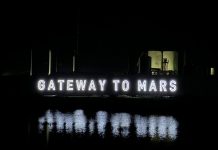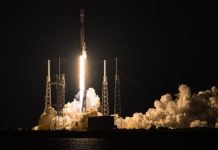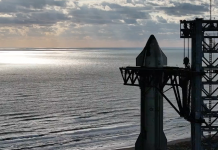Competitors set government regulators against SpaceX Starlink
Today SpaceX launches dozens of Starlink satellites a month, deploying an LEO constellation that powers broadband internet. In terms of the pace of the development of the Earth’s orbit, no one can now compare with Elon Musk’s company, which is a growing concern of competitors.

The Starlink project, owned by space research company SpaceX, has the right to send about 12,000 satellites into orbit to provide ultra-fast Internet to all corners of the Earth. The company has already requested permission to launch another 30,000 vehicles.
An alliance of competitors, regulators, and experts argue that the American billionaire is building a near-monopoly that threatens space security and the environment. Rival companies like Viasat, OneWeb Global, Hughes Network Systems, and Boeing have chosen to fight Starlink, including by bringing in regulators in the US and Europe. Some complain that SpaceX satellites are blocking the signals of their vehicles and physically threatening their fleets.
Mr. Musk’s project is still in beta testing, but it is already disrupting the industry. It has even prompted the European Union to urgently start developing a competing space project, which will be presented by the end of the year. The critics’ main argument is that SpaceX adheres to the principle of “first, launch, upgrade, then.” This prioritizing speed over quality allowed Tesla (which belongs to the same Elon Musk) to become a pioneer in the mass market for electric vehicles.
“SpaceX has a simple-minded approach to space, ” said Chris McLaughlin, chief executive of government affairs at rival OneWeb. – Each of our companions is a kind of Ford Focus. We adhere to the same approach: we thoroughly test, and then the device works. Simultaneously, Starlink satellites are like Tesla cars: they launch them and have to be upgraded, repaired, or even completely replaced. “
SpaceX reported in 2019 that about 5% of the first batch of Starlink satellites had failed. They remained in orbit and gradually fell to Earth, only to burn up in the atmosphere in a few years. In November 2020, astrophysicist Jonathan McDowell of the Harvard-Smithsonian Center for Astrophysics calculated that Starlink’s failure rate was nearly 3%. Mr. McDowell said Starlink had made significant improvements to its satellite designs since then, with a bounce rate below 1%, with the company continuing to improve its devices.
Even so, Starlink has so many satellites that even a low failure rate would mean a relatively high threat to orbital safety due to the potential for collisions. “They are clearly constantly improving … but SpaceX is facing a challenge, and it is unclear if they will be able to manage the final constellation successfully, ” said Mr. McDowell.
Starlink operates more than 1,300 low-Earth orbit spacecraft and adds around 120 each month. In the future, the company may well bypass all the rest of humanity in the entire history of astronautics: the total number of satellites launched since the 1950s is now about 9,000.
Orbital space is limited, and the current lack of universal regulation means companies can place satellites on a first-come, first-served basis. Elon Musk is on his way to occupy most of the free orbital space because he has his own rockets.
In the coming days, the US Federal Communications Commission (FCC) approved SpaceX’s request, allowing the company to launch more satellites into orbit about 550 kilometers. In this case, it will be more and more difficult for competitors to withdraw their devices. Therefore, other space companies are asking the FCC to force SpaceX to reduce the failure rate of its vehicles to 1 in 1000 and improve collision avoidance capabilities and ensure that Elon Musk’s vehicles do not interfere with the transfer of other vehicles in orbits above Starlink.
“We need to strive to have fewer satellites, while they themselves are more advanced,” says Mark Dankberg, founder and executive chairman of Viasat. On Twitter, Mr. Musk commented on Mr. Dunkberg’s earlier fears that SpaceX posed a threat to orbital traffic, saying “ Starlink “ poses a threat “to Viasat’s profit stream – more likely so.”
A Boeing spokesperson, which also complains about Starlink to the FCC, said: “It is critical to a future safe and stable orbital environment that standards are globally consistent and provide a competitive environment. “
In space, satellites revolve around the Earth at a speed of tens of thousands of kilometers per hour. Any collision can lead to the formation of thousands of debris that can render the orbit unusable for many years: it is tough to protect vehicles from debris flying at such speeds. Competitors point out that Starlink satellites are characterized by low maneuverability, which means that other companies’ devices are forced to respond to the threat of collisions.
The Starlink satellites have come dangerously close to other spacecraft twice in the past two years. For example, on April 2, the Starlink satellite forced OneWeb to reroute one of its vehicles (the probability of a collision was 1.3% – a very high rate for space). SpaceX satellites are equipped with an AI-based automatic collision avoidance system. However, this system works unpredictably for other devices, so it had to be turned off at that time. Starlink does not disclose details about its collision avoidance system, and experts believe that without approved standards, it is difficult to take any such system seriously – it is unclear what data it uses to operate.
By the way, in September 2019, the European Space Agency (ESA) had to use an evasive maneuver at the last minute on one of its spaceships to avoid a possible collision with the Starlink satellite at a probability of 1 in 1000. This may seem like a minor threat, but NASA usually sends ships to the ISS with a collision probability of 1 in 100,000. ESA said it had to relocate its satellite because SpaceX did not have an action plan. SpaceX explained that it missed ESA’s emails about this issue due to a “bug” in its communications systems. Overall, it looks like such dangers will become the norm.
The working satellites have thrusters, but some vehicles fail and cannot be controlled from the ground. They gradually decrease and burn up in the atmosphere, but they turn into a piece of space debris rotating at a tremendous speed while in orbit. And if there are thousands of them, it may complicate the launch and exploration of outer space in the future.
Low Earth orbit may soon become crowded with broadband communications satellites: Amazon Kuiper aims to launch 3,200 satellites, Britain’s OneWeb about 700, and Canada’s Telesat about 300. Russia wants to deploy Sphere, while China is working on its own groupings, which may number thousands or even tens of thousands of vehicles. An EU spokesman recently said creating a constellation of satellites for broadband internet is a strategic priority.
Space security experts say the number of projects means tighter regulation of this area is needed to avoid disaster. At the same time, SpaceX’s actions are legal today, but this does not mean that such an approach is safe or acceptable in the long run.




